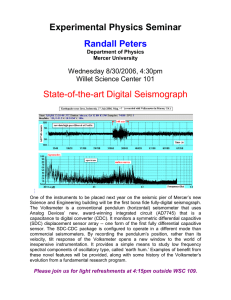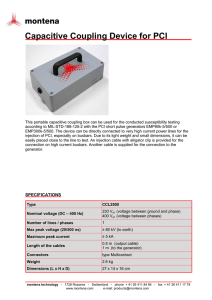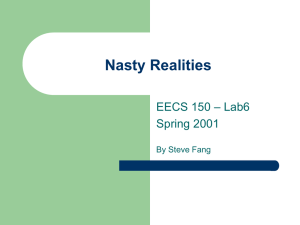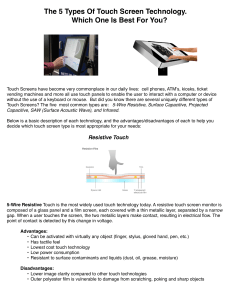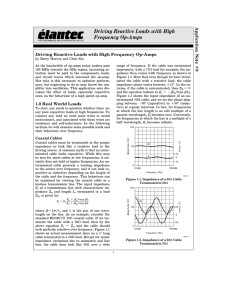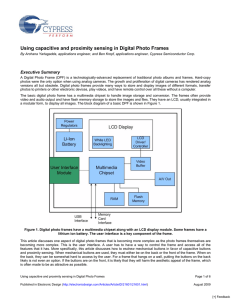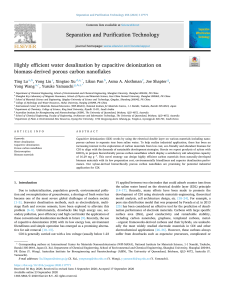Driving Capacitive Loads
advertisement
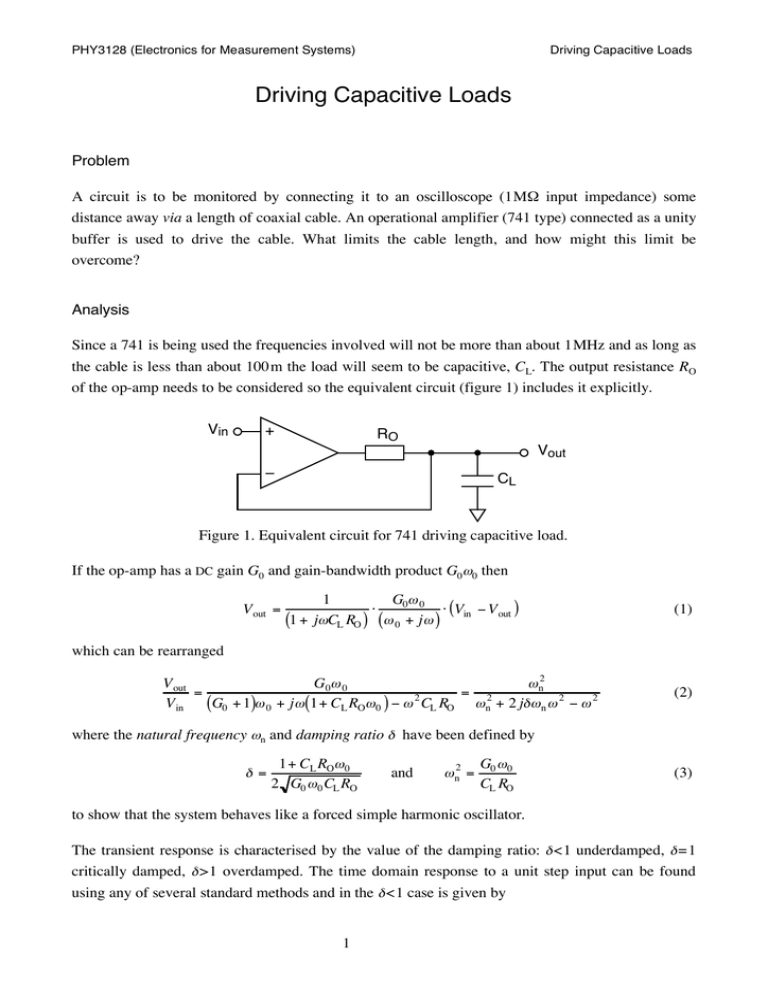
PHY3128 (Electronics for Measurement Systems) Driving Capacitive Loads Driving Capacitive Loads Problem A circuit is to be monitored by connecting it to an oscilloscope (1 M! input impedance) some distance away via a length of coaxial cable. An operational amplifier (741 type) connected as a unity buffer is used to drive the cable. What limits the cable length, and how might this limit be overcome? i Analysis Since a 741 is being used the frequencies involved will not be more than about 1 MHz and as long as the cable is less than about 100 m the load will seem to be capacitive, CL. The output resistance RO of the op-amp needs to be considered so the equivalent circuit (figure 1) includes it explicitly. i i Vin + RO Vout – CL Figure 1. Equivalent circuit for 741 driving capacitive load. If the op-amp has a DC gain G0 and gain-bandwidth product G0!0 then V out = 1 G0! 0 " " (V # V ) (1 + j!CL RO ) (! 0 + j ! ) in out (1) which can be rearranged G0! 0 V out ! n2 = = V in (G0 + 1)! 0 + j ! (1+ CL RO! 0 ) " ! 2 CL RO ! n2 + 2 j#! n ! 2 " ! 2 (2) where the natural frequency !n and damping ratio " have been defined by ! = 1+ CL RO" 0 2 G0 " 0 CL RO and 2 "n = G0 " 0 CL RO (3) to show that the system behaves like a forced simple harmonic oscillator. The transient response is characterised by the value of the damping ratio: " < 1 underdamped, " = 1 critically damped, " > 1 overdamped. The time domain response to a unit step input can be found using any of several standard methods and in the " < 1 case is given by i i i i 1 i i i i PHY3128 (Electronics for Measurement Systems) V out = 1 ! Driving Capacitive Loads exp( !"# n t ) 1! "2 sin(# d t + $ ) (4) where $ 1" #2 ' ! = arctan & ) % # ( 2 and * d = * n 1" # . (5a,b) A typical underdamped response to a unit step input is sketched in figure 2, which also defines tmax, the time to the first peak, and Vmax, its height. The natural frequency and damping ratio of the system can be obtained from measurements of these quantities because t max = ! " n 1 # $ 2 ( and V max = 1+ exp # !$ ) 1# $2 . (6) Graphs of the time and frequency domain behaviour of the system for a range of damping ratios are given in the appendix. Vmax Vout 1.0 0.0 tmax Time Figure 2. Step response of 741 follower driving a capacitive load. Practical Example The 741 amplifier has: G0 ~ 105, G0!0 ~ 6 ! 106 s–1 and RO ~ 75 " so i i i i i i i i !n CL i i " 10 pF 90 ! 106 s–1 7.3 100 pF 30 ! 106 s–1 2.3 1 nF 9 ! 106 s–1 0.73 10 nF 3 ! 106 s–1 0.23 i i i i i i i i 2 i i i i i i i i PHY3128 (Electronics for Measurement Systems) Driving Capacitive Loads and it would be unwise to allow the cable length to exceed 5 m, equivalent to a load of about 500 pF, i i to avoid ~1 MHz ringing distorting the oscilloscope trace. This sort of problem is also worth bearing in mind when using differentiators as these present a capacitive load to the stage that precedes them. i Appendix The figures [adapted from D.K. Anand Introduction to Control Systems (1974) Pergamon] show the time- and frequency-domain response of a second-order system. © Copyright CDH Williams University of Exeter 2002 CW020303/2 3

